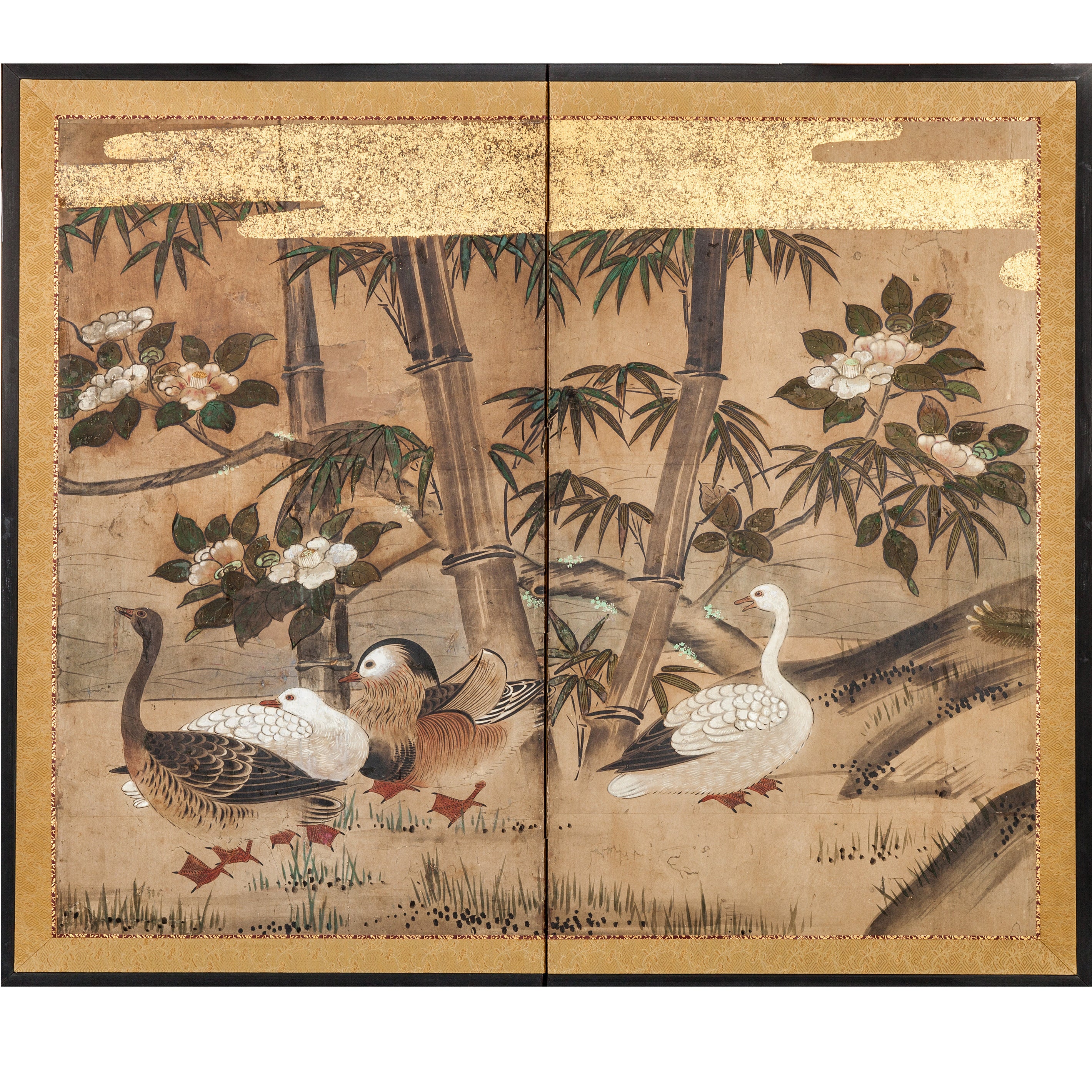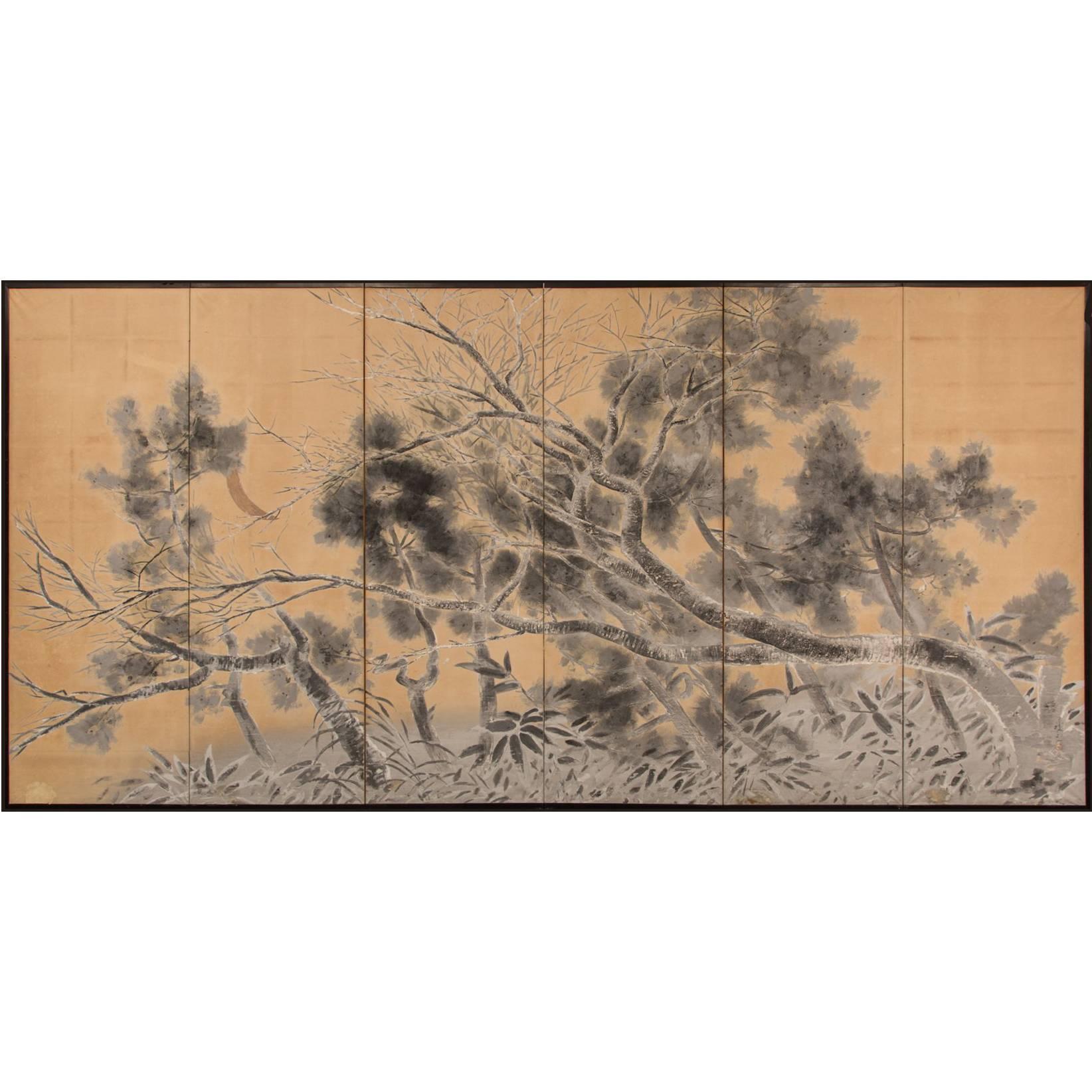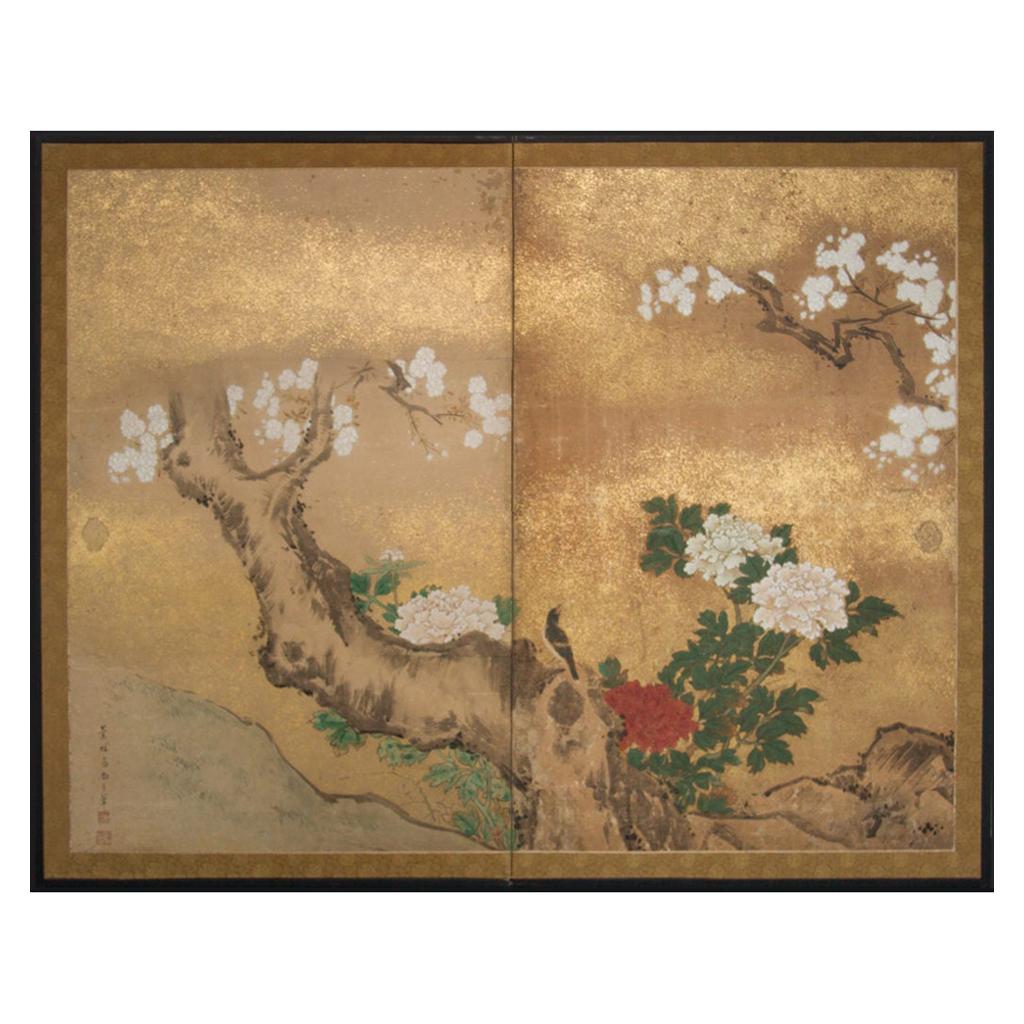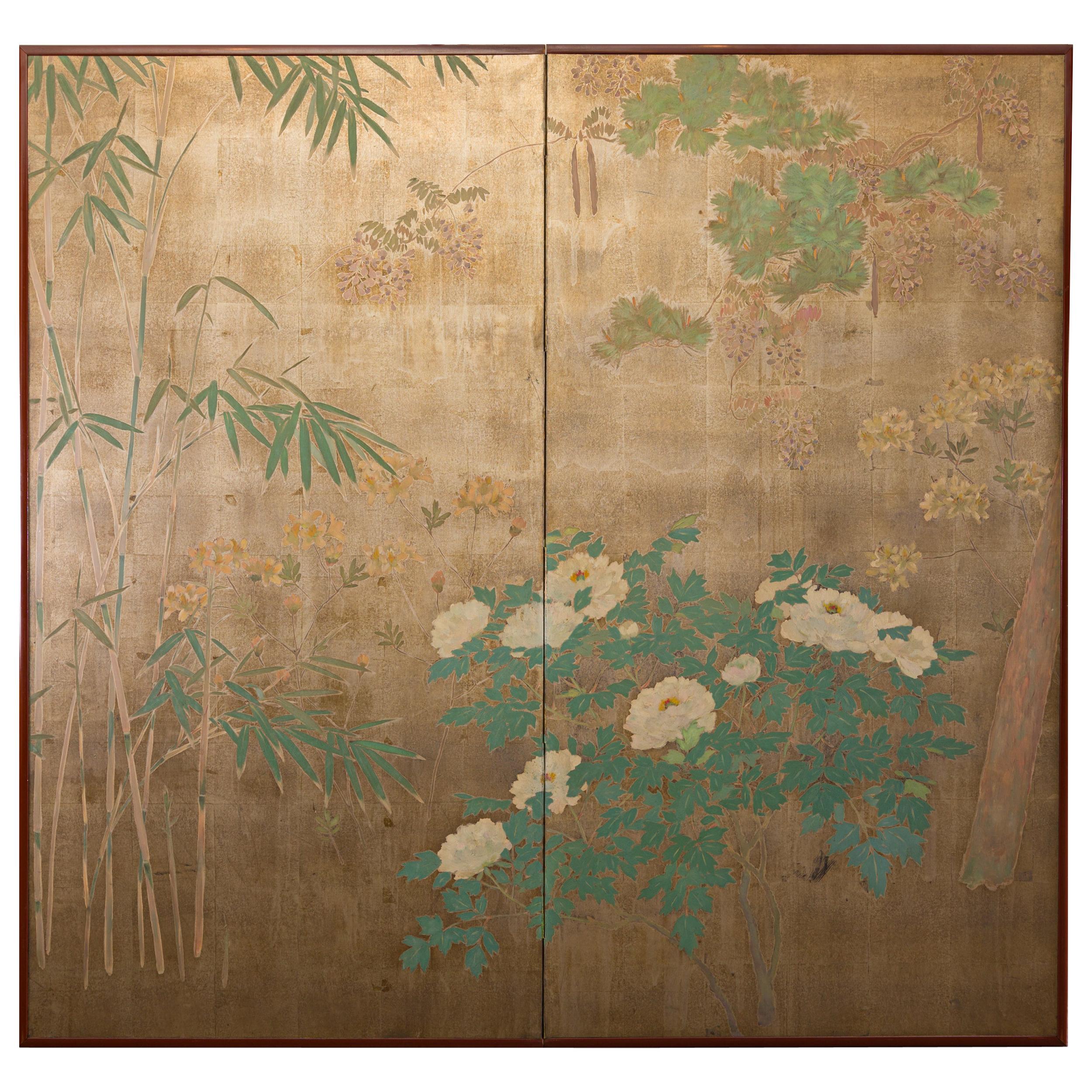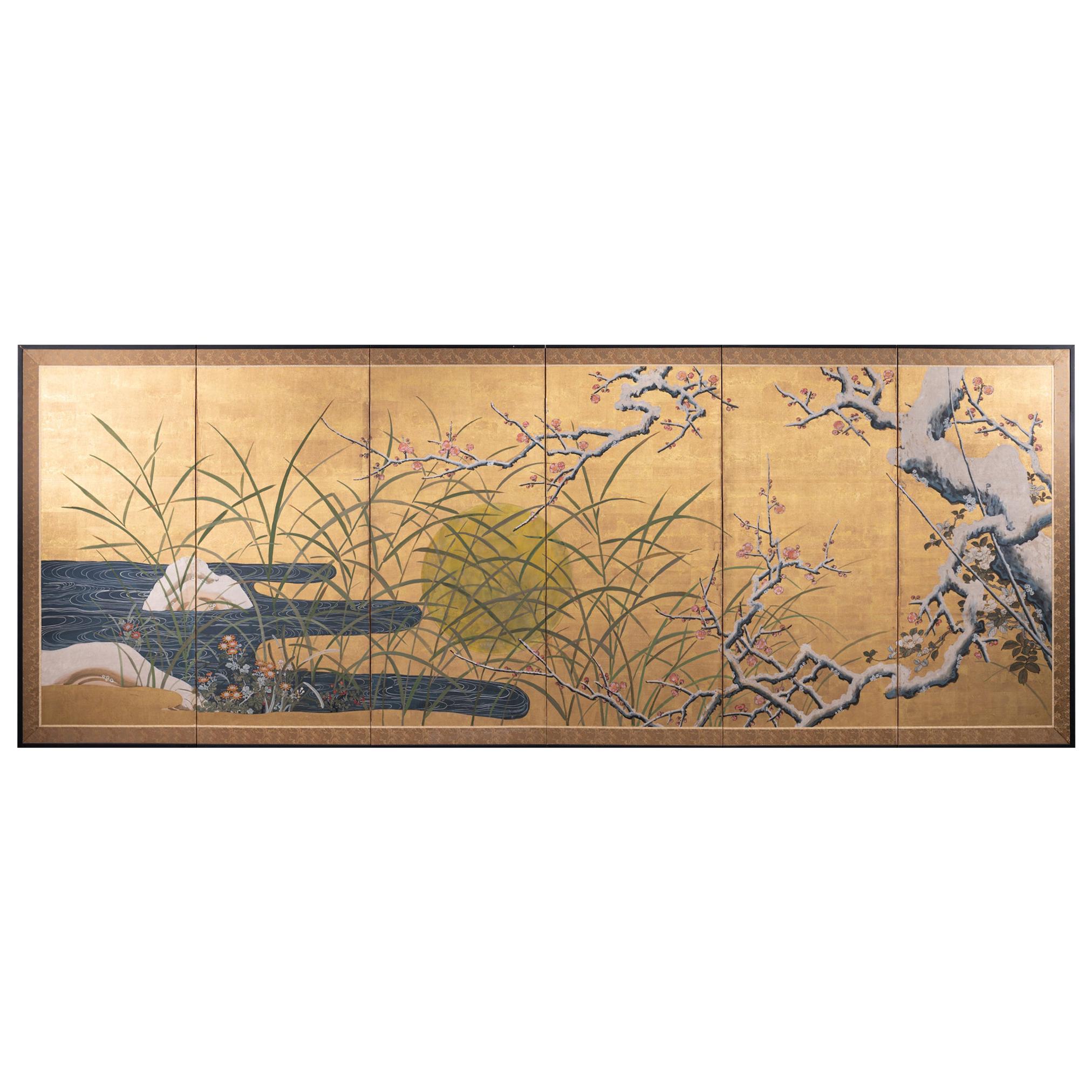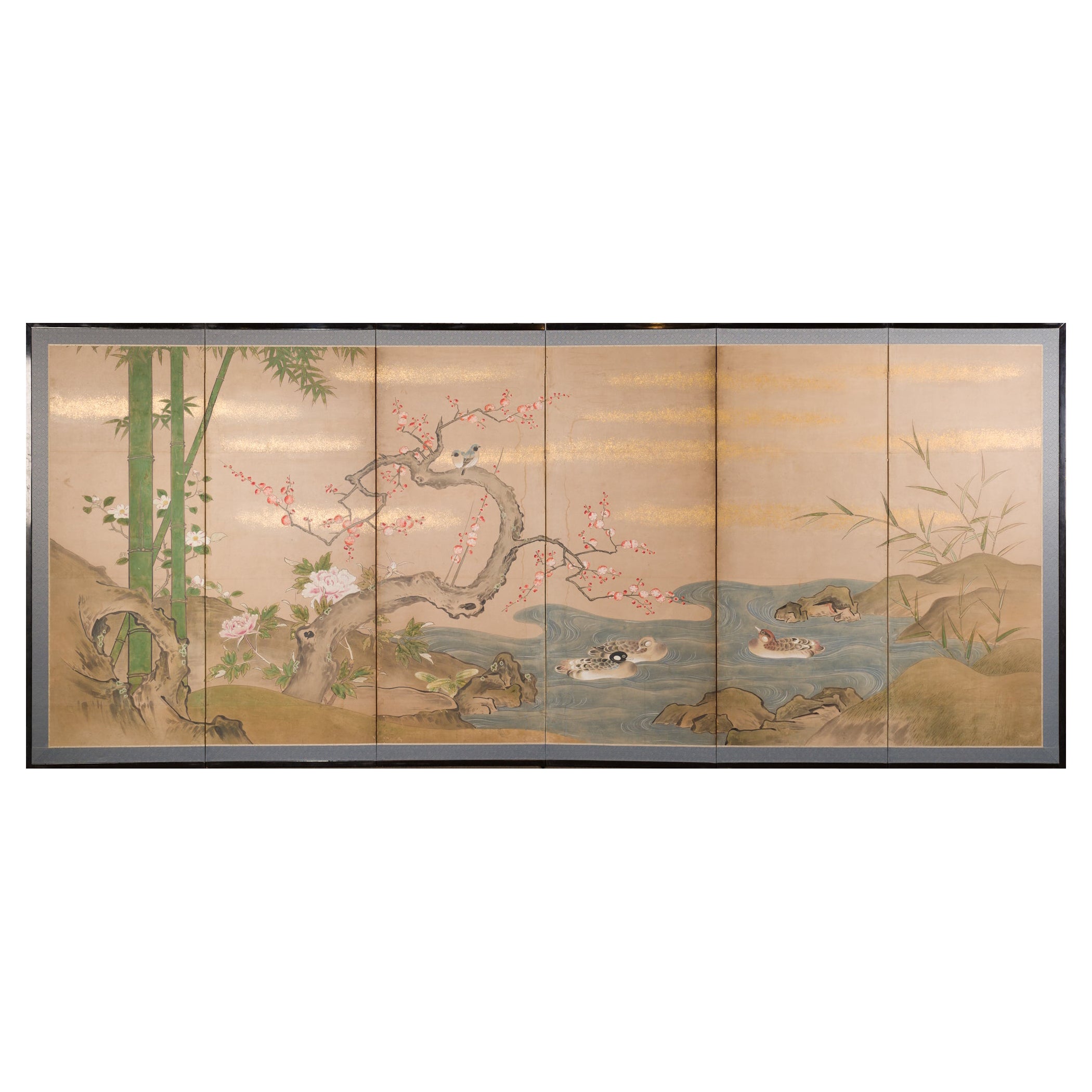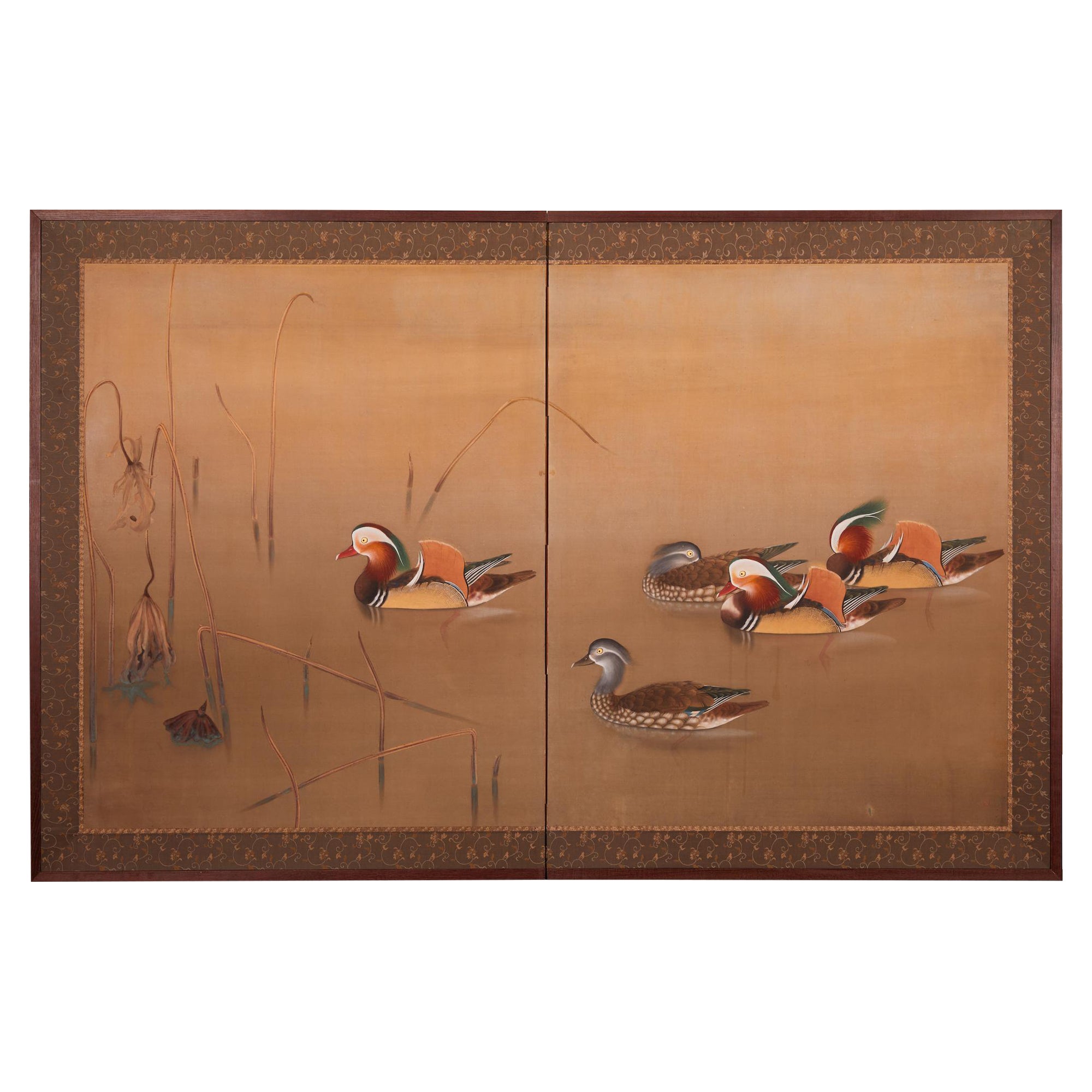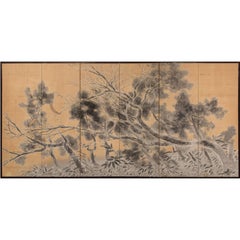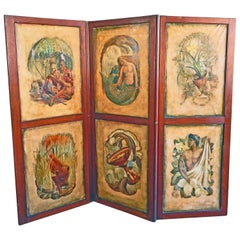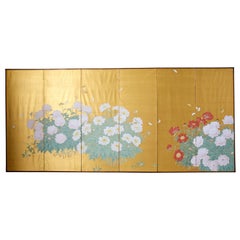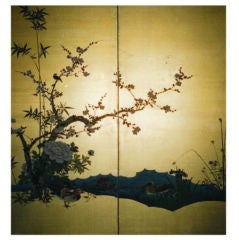
Japanese Screen: Painting Peony, Plum and Bamboo with Ducks
View Similar Items
Want more images or videos?
Request additional images or videos from the seller
1 of 2
Japanese Screen: Painting Peony, Plum and Bamboo with Ducks
About the Item
Kano School, c. 1900 each
- Dimensions:Height: 60 in (152.4 cm)Width: 54 in (137.16 cm)
- Place of Origin:
- Period:
- Date of Manufacture:c. 1900
- Condition:
- Seller Location:Hudson, NY
- Reference Number:Seller: S9361stDibs: U1004138551316
About the Seller
5.0
Recognized Seller
These prestigious sellers are industry leaders and represent the highest echelon for item quality and design.
Established in 1971
1stDibs seller since 2008
151 sales on 1stDibs
Typical response time: 4 hours
Associations
The Art and Antique Dealers League of AmericaAntiques Associations Members
More From This SellerView All
- Japanese Two Panel Screen: Mandarin Ducks and Geese Among Bamboo and FlowersLocated in Hudson, NYJapanese Two Panel Screen: Mandarin Ducks and Geese Among Bamboo and Flowers, Edo period painting (c. 1850) of mandarin ducks and geese on a grassy sh...Category
Antique Mid-19th Century Japanese Edo Paintings and Screens
MaterialsGold
- Six Panel Japanese Screen: Winter Scene of Pine, Plum, and BambooLocated in Hudson, NYJapanese Six Panel Screen: Winter Scene of Pine, Plum, and Bamboo Under Crescent Moon. Pine, plum and bamboo are known as the three friends of winter, because they all thrive and bl...Category
Early 20th Century Japanese Taisho Paintings and Screens
MaterialsPaper, Wood
- Japanese Two-Panel Screen Peony and CherryLocated in Hudson, NYJapanese two-panel screen: Peony and Cherry, Edo period (circa 1800) painting, formerly fusuma (Japanese sliding doors), executed in the Kano school style, featuring a cherry tree in...Category
Antique Early 1800s Japanese Edo Paintings and Screens
MaterialsGold Leaf
- Japanese Two-Panel Screen Peony, Wisteria, Cherry and Bamboo on Soft SilverLocated in Hudson, NYJapanese two-panel screen: Peony, Wisteria, cherry and bamboo on soft silver, Meiji period (1868-1912) painting of a garden in spring. Painted in mineral pigments on oxidized silver ...Category
Antique Early 1900s Japanese Meiji Paintings and Screens
MaterialsSilver Leaf
- Japanese Six-Panel Screen, Winter Landscape with Flowering PlumLocated in Hudson, NYJapanese six-panel screen: Winter landscape with flowering plum, Meiji period (1868-1912) painting of a full moon with wild grasses between river's edge and a snow covered plum tree ...Category
Early 20th Century Japanese Meiji Paintings and Screens
MaterialsGold Leaf
- Japanese Six Panel Screen: Ducks at Water’s EdgeLocated in Hudson, NYMeiji period painting (1868 - 1912) of a peaceful water landscape in Spring with plum, peony, camellia, and bamboo. Ducks swim in a pond while a pa...Category
Antique 19th Century Japanese Paintings and Screens
MaterialsGold
You May Also Like
- Hand-Painted Japanese Inspired Screen by Artist Robert CrowderBy Robert CrowderLocated in San Francisco, CAA tall, beautifully hand-painted on wood panel folding screen of Japanese style by artist Robert Crowder (b. 1911 - d.2010). Signed on the back side. After working as a missionary in Korea, Crowder went to Japan to study Nihonga ("Japanese-style paintings" are paintings that have been made in accordance with traditional Japanese artistic conventions, techniques and materials. While based on traditions over a thousand years old, the term was coined in the Meiji period of the Imperial Japan, to distinguish such works from Western-style paintings) Robert H...Category
Late 20th Century American Screens and Room Dividers
MaterialsWood
- "Sailors and Mermaids, " Stunning, Unique Screen, FranceLocated in Philadelphia, PAThis stunning assemblage of 12 Art Deco paintings, depicting mythological and 1930s contemporary themes, all in oil on canvas, have been set into a walnut folding screen...Category
Vintage 1930s French Art Deco Paintings
MaterialsPaint
- Japanese Six-Panel Meiji Screen Flowering Peonies and ButterfliesLocated in Rio Vista, CAStunning Japanese Meiji period six-panel large screen. Featuring blooms of spring flowering white, pink, and red peonies with butterflies over a gilt background. Made in the Nihonga ...Category
20th Century Japanese Meiji Paintings and Screens
MaterialsBrass
$7,200 Sale Price20% Off - 4-Leaf Screen with Lacquered Landscape by Bernard Cuenin, circa 1970Located in VÉZELAY, FRAmazing folding screen with 4 leaves / panels in lacquered and painted wood. The painting represents a winter lake landscape: we see the shore of a marshy pond, covered with various...Category
Vintage 1970s French Mid-Century Modern Screens and Room Dividers
MaterialsWood, Lacquer, Paint
$12,352 Sale Price25% Off - 19th Century Japanese Screen for Tea-Ceremony, Ink Bamboo and Plum on Gold LeafLocated in Kyoto, JPThree Friends of Winter Nakajima Raisho (1796-1871) Late Edo period, circa 1850 Ink and gold leaf on paper. This is a double-sided Japanese Furosaki or tea-ceremony screen from the mid 19th century; bamboo and plum on the front, young pines the back. It by Nakajima Raisho, a master painter of the Maruyama school in the late Edo and early Meiji periods. In this work Raisho combines exquisite ink brushwork with large open spaces of brilliant gold-leaf to inspire the viewers imagination. Rather than naturalism, he is searching for the phycological impression of the motifs, resulting in abstraction and stylization. His simplification of the motifs the result of looking to capture the inner nature of the objects. This art motif is known as Sho Chiku Bai, or the Three Friends of Winter. Evergreen pine connotes steadfastness, bamboo suggests both strength and flexibility, while plum blossoms unfurling on snow-laden branches imply hardiness. Combined, this trio is emblematic of Japanese new year. Chinese literati were the first to group the three plants together due to their noble characteristics. Like these resilient plants flowering so beautifully in winter, it was expected of the scholar-gentleman to cultivate a strong character with which he would be able to show the same degree of perseverance and steadfastness even during times of adverse conditions. The screen would have been placed near the hearth of a room used for the Japanese tea ceremony, shielding the fire from draughts and also forming a stimulating and decorative backdrop behind the tea utensils. It would have been used in the Hatsugama, or first tea-ceremony of the new year. Nakajima Raisho (1796-1871) originally studied under Watanabe Nangaku before entering the school of Maruyama Ozui. He was the highest ranking Maruyama school painter at the end of the Edo period and was known as one of the ‘Four Heian Families’ along with Kishi...Category
Antique Mid-19th Century Japanese Edo Paintings and Screens
MaterialsGold Leaf
- Swan Screen by Lynn CurleeBy Lynn CurleeLocated in New York, NYFive-panel folding screen hand-painted with a swan and its reflection by Lynn Curlee, fine artist and author/illustrator of award winning books for children, The reverse is painted ...Category
Late 20th Century American Screens and Room Dividers
MaterialsAcrylic, Wood
$12,000
